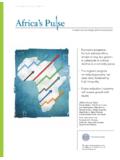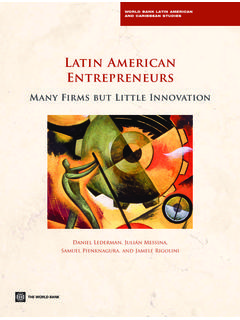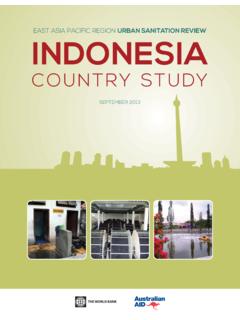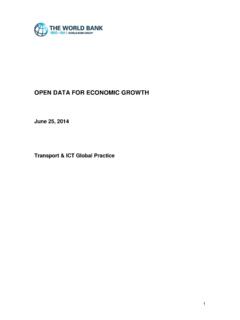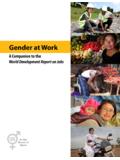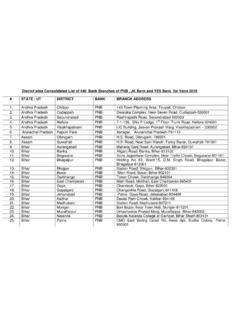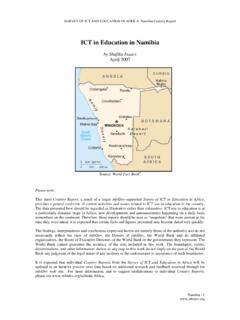Transcription of Supporting Report 2 China’s Growth through …
1 Supporting Report 2. China's Growth through technological convergence and innovation 161. 162 china 2030 Summary .. 163. Introduction .. 166. I. Growth Drivers: Betting on TFP .. 167. II. Building technological Capacity .. 175. III. The Road to innovation : Assets and Speed Bumps .. 183. IV. Defining Policy Priorities .. 189. V. Some Key Areas for innovation .. 201. Annex A: Annex Tables .. 208. References .. 219. china s grow th through technologic al convergence and innovation 163. Executive Summary Income gaps among countries are largely explained by differences in productivity.
2 By raising the capital/labor ratio and rapidly assimilating technologies across a wide range of activities, China has increased factor productivity manifold since 1980 and entered the ranks of middle income countries. With the launch of the 12th FYP, China has re-affirmed its goal of becoming a mod- erately prosperous society by 2020. This Report maintains that China can become a high income country by 2030 through a strategy combining high levels of investment with rapid advances in technology comparable to that of Japan from the 1960s through the 1970s and Korea's from the 1980s through the end of the century.
3 During the next decade, more of the gains in productiv- ity are likely to derive from technology absorption and adaptation supplemented by incremental innovation , while high levels of investment will remain an important source of Growth in China through deepening and embodied technological change. By 2030, China expects to have pulled abreast technologically of the most advanced countries and increasingly, its Growth will be paced by innovation which pushes outwards the technology frontier in areas of acquired comparative advantage.
4 Both technology catching-up through technological absorption and innovation at the technological frontiers will rest on the success of a number of policies focused on: effective com- petition, the composition of the business sector and its strategic orientation; agile policymaking and robust regulation which minimizes the risk of crises from asset bubbles that can depress innovative activity, and which positions the economy to seize evolving opportunities; skill devel- opment; R&D; national and international networking to promote innovation ; and the nurturing of innovation especially in the areas of green technologies, health and medical services, urban- ization modes, and in major urban centers.
5 A competitive market environment is the precondition for a steady improvement in pro- ductivity. Starting in the late 1980s, for example, market-enhancing reforms increased entry of foreign and private firms and stimulated competition in most manufacturing sub-sectors. Even in some strategic or pillar industries (for example, airlines and telecommunications), the breaking up and corporatization or exit of incumbent mainly state owned providers in the 1990s,strengthened competitive pressures. More recently, the phasing out of tax incen- tives, which had favored foreign investors, stimulated competition by leveling the playing field with domestically-owned firms.
6 China's WTO accession in 2001 increased competition from imports and the large volume of FDI has led to a further intensification of competitive pres- sures. Sustaining this trend through further institutional reforms and measures to enhance the supply of risk capital, will be critical to the making of an innovative economy, as it will induce the deepening of the private sector, reduce barriers to firm entry and exit, promote the Growth of dynamic SMEs, prod the SOEs to raise their game (and pave the way for further reform), and result in national market integration as well as much needed regional or local specialization of industry.
7 The speed with which advanced technologies diffuse and the capacity to innovate will be keyed to the availability of a vast range of technical and soft skills for example, management, research, design and production, effectively harnessing IT support, and marketing and customer relationships. By 2030, China is expected to have up to 200 million college graduates, more than the entire workforce of the United States. Moreover, university-level education is improv- ing China now has 11 universities in the top-ranked 200 universities of the Even so, the quality of tertiary education more broadly is a matter of concern and some employers are experiencing a serious shortage of the skills required to upgrade processes and the product mix.
8 For China to become an innovative knowledge economy, increased investment in human capital will be critical to the building of analytic and complex reasoning capabilities, enhancing 1 As ranked by the Times Higher Education Supplement 2011. The list includes universities in Hong Kong (China). 164 china 2030 scientific literacy and the knowledge base of students, encouraging creativity and instilling communication and teamwork skills. Raising the volume and quality of skills demands inno- vation in pedagogical techniques with greater use of multimedia and flexible online training customized to the varying needs of students so as to raise the productivity of the education sec- tor overall and to maximize the benefits from the limited pool of talented instructors and the available physical facilities.
9 Traditional standardized approaches to training by way of lectures to large classes may need to be rethought with institutions being encouraged to experiment and given the autonomy to do so. China's spending on R&D is on a steep upward trend. This will increase the production of ideas and prepare the ground for innovation . But because most applied research and innovation are done within firms and the majority of scientists will be employed by businesses, the com- mercializing of ideas will flourish and drive productivity when firms make innovation a central plank of their business strategies.
10 How quickly firms take advantage of the knowledge capital being created by R&D will be a function of market Growth and competition, the quality of the workforce and fiscal and other incentives prioritizing research intensive activities. Agricultural research will also continue to contribute substantially to productivity gains, price stability and to food security. An adequate volume of much needed basic research, by virtue of its public good characteris- tics, will depend upon government initiatives and funding. Government agencies, key universi- ties and research institutions and some large corporations, will need to take the lead especially in the high risk, blue skies research through well targeted incentives, by committing a sufficient (and sustained) volume of funding to high-caliber institutions, and by means of prizes and awards.
